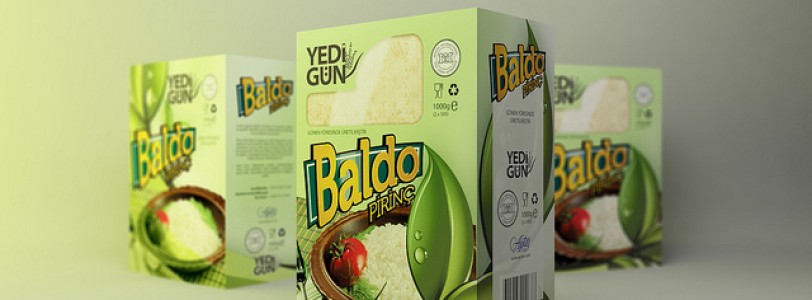The lack of ecological design in many products in past years, has resulted in the continuous struggle of the material’s impact on earth today. If large companies such as Coca Cola continue to use un-environmentally friendly materials then this will eventually build up to an uncontrollable and irreversible rate. When in supermarkets and shops, people can be oblivious to the impact packaging is having on the environment and only consider what the product looks like. I’m not alone in thinking this is a serious situation: a survey of 3,000 consumers across the UK, US and Poland found that 62% of respondents would “feel negatively towards a company that didn’t use the most environmentally friendly packaging available”.
After briefly visiting this topic area in graphics GCSE it was made clear that ecological design needs to be considered when designing a product. Materials should not only be considered for their aesthetic quality when designing a product, but also their life cycle. Many different elements need to be considered when producing an environmentally friendly product such as: the type and amount of materials used, the type of ink used, the manufacturing techniques, whether it’s recyclable or not etc. Environmentally friendly packaging causes less damage to the environment due to their: recyclable materials (materials that can be used again e.g. glass, metal, card and paper), biodegradable feature (broken down, reducing the need for incineration and landfill sights). However even recyclable materials require energy to be broken down into new materials, continuing the demand for fossil fuels. So, there seems to be viscous circle in which the environment is always negatively affected. Can this issue be stopped?
When designing a product, designers may prioritise the visual effect and aesthetic over the ecological aspect and ignore the products life cycle. Where will a product end up after use? Potentially a landfill site or burnt using incineration, releasing harmful greenhouse gases into the atmosphere. Products should be designed with a reusable aspect in mind (e.g. glass milk bottles repeatedly used for milk, but could also be used as house decor or desk organisation to store pens). This stagnant problem has remained unprioritised by many companies for a long time. Nowadays, companies are slowly addressing this issue, but need to be more assertive with the speed at which their packaging is improving.
When it comes to reducing packaging waste and carbon emissions, plastic isn't the only material that companies are looking to cut. Puma’s new idea aims to reduce harmful waste associated with paper production, transportation and disposal. The Clever Little Bag replaces traditional shoeboxes (which contribute to millions of tons of waste a year), with a reusable bag slipped over a recyclable cardboard box. This bag requires less packaging and reduces water, energy and fuel consumption by replacing the large cardboard lids commonly found on shoe boxes (package's paper material is reduced by 65%). The light weight and flat design of the clever little bag uses less energy for transportation. Puma have also considered the afterlife of the product: the clever little bag also becomes a reusable bag after purchase, ideal for shopping/ storage. Another example of a company with ecological packaging is KFC. The fast-food chain has created the Scoff-ee Cup, which is a biscuit wrapped in sugar-paper doubled with a layer of white chocolate in the shape of a cup. The cup’s texture enables it to contain the heat of espresso and is edible so doesn’t need to be disposed of at the end of use.
On the other hand, companies such as Walkers, Doritos and Hula Hoops have a less ecological approach to their packaging. Typical snack crisp bags are made from up to seven layers of foil and plastic. Companies like this because these bags are light, reduce shipping volume, don’t take up much space on a shelf, and are graphics friendly. A negative of this is that there’s currently no machinery to separate these layers, so they aren’t recyclable. Unfortunately, there is no easy solution to multi layered packaging. According to sustainability experts at Waste Management, multi-layered packaging is considered the worst of the worst when it comes to recycling. “When things are mixed together, you devalue the product and it becomes too expensive to recycle” says Tom Carpenter, executive director of Waste Management’s sustainability services. I believe that there shouldn’t be an excuse for these companies and they should do all they can to change the materials used.
However, to some, defining ‘sustainable packaging’ is a big struggle. Nicola Jenkin, associate director at Consultants Anthesis says “consumers will often define ‘sustainable’ packaging through one issue - such as recyclability and may not necessarily interpret elements such as optimal pack design increased recycled content or FSC-certified sources as sustainable. This may be down to consumers not understanding what this means, or not physically being able to see this change. Even though evidence may suggest that sustainable packaging is important to consumers, there has been too much focus on the choice of packaging itself.” This suggest that there is more to sustainable packaging than what customers think, its more complex and difficulty to produce ecological products. It also suggests that consumers are unable to identify what truly makes sustainable packaging and they could potentially be led to buy unsustainable products due to their misconceptions. Richard Inns from packaging specialists, the PEC Partnership says “recycling of packaging is one of the two main ways that companies seek to communicate its sustainability, the other being source reduction. Recycling is a key part of sustainable sourcing, of that there is no doubt. The pity is that, when waste reduction is such a key goal, the huge role of packaging in preventing waste is so little communicated.” This suggests that companies are prioritising the recyclable aspect of their products, where the focus should be on minimising the amount of materials used (using materials economically), to reduce waste. I agree that more people should be educated on what makes packaging sustainable so that they can purchase the correct products.









This is a really important issue to touch upon. Well done!